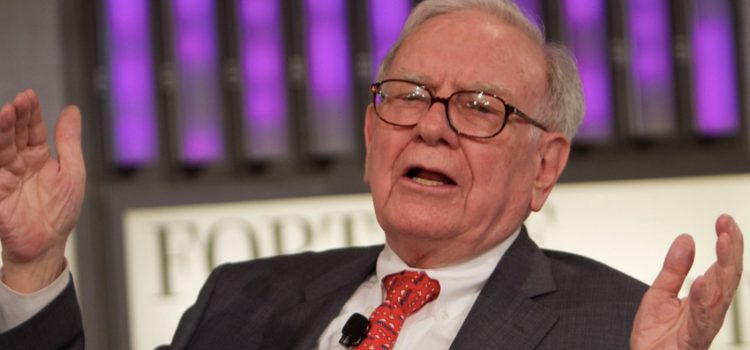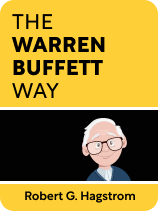

This article is an excerpt from the Shortform book guide to "The Warren Buffett Way" by Robert G. Hagstrom. Shortform has the world's best summaries and analyses of books you should be reading.
Like this article? Sign up for a free trial here.
What’s focus investing? How is it different from modern portfolio theory? Which approach does Warren Buffett take?
According to Robert G. Hagstrom, Warren Buffett departs significantly from the mainstream when it comes to portfolio management. While most investors diversify their portfolios broadly to minimize volatility, Buffett focuses on a select handful of stocks to maximize his chances of above-market returns.
Read more to learn about focus investing and why Buffett prefers it to the modern portfolio approach.
Focus Investing
To see the merits of focus investing, it’ll help to first discuss the main alternative: diversification. Hagstrom notes that investors traditionally prefer diversified portfolios because they supposedly minimize risk—after all, if you have 1,000 stocks represented in your portfolio and one lone stock takes a nosedive, it’s unlikely to cause a catastrophic loss. By contrast, if you only have five stocks in your portfolio, one plummeting stock could cause an outsized loss.
However, Hagstrom points out that Buffett is opposed to diversification for one simple reason—it can only lead to mediocre results relative to the market’s average returns. After all, the more diversified your portfolio is, the more closely its returns will mirror those of the stock market.
Not content with mediocrity, Buffett instead prefers a portfolio consisting of around 10 stocks that he deems exceptional. To show that this approach is most likely to generate above-market returns, Hagstrom cites a statistical simulation showing how hypothetical portfolios of different sizes performed over time. This simulation included 3,000 portfolios of only 15 stocks—the focus group—3,000 portfolios of 50 stocks, 3,000 portfolios of 100 stocks, and 3,000 portfolios of 250 stocks. Hagstrom notes that, of the focus portfolios, over 25% beat the market over a sample 10-year period; by contrast, only 2% of the portfolios with 250 stocks beat the market over that same time span.
Admittedly, Hagstrom concedes that because smaller portfolios are more volatile—meaning they have greater swings in value—they’re also much more likely to deliver below-average returns. However, he suggests that investors can avoid this possibility through Buffett’s savvy stock selection, which he deems far less likely to yield subpar returns.
Focus Investing vs. Modern Portfolio
Buffett’s focus investing is diametrically opposed to the orthodox investing approach in academia–modern portfolio theory. In particular, Buffett rejects modern portfolio theory’s understanding of market efficiency and risk.
View #1: The Efficient Market Hypothesis
As Hagstrom relates, the cornerstone of the modern portfolio is the efficient market hypothesis (EMH)–the thesis that stock market prices perfectly reflect all available information about a given company, meaning all stocks are fairly priced. Consequently, proponents of EMH reason that investing ultimately boils down to luck, since no amount of analysis will reveal insights that aren’t already baked into a company’s stock price.
(Shortform note: Although Hagstrom and other investors write as if EMH is one simple thesis, economists typically distinguish between several forms of EMH. For instance, only the strong form of EMH states that all information, public or private, is baked into stock prices. By contrast, the weak form of EMH specifies only that all past financial information is baked into stock prices, a more modest claim.)
Buffett rejects EMH, arguing that many investors—himself included—have used focus investing to generate above-market returns, and these returns aren’t just the product of luck. These investors, including Charlie Munger, Bill Ruane, and Lou Simpson, all used similar approaches to investing, centered around Graham’s strategy of finding undervalued stocks. And, rather than claiming that the success of this shared approach is a coincidence, Buffett finds it much more believable that EMH is simply mistaken.
(Shortform note: While Hagstrom claims that Buffett’s success could only be chalked up to luck if the EMH were true, another explanation exists: EMH wasn’t true when Buffett began investing, but it’s true now. In other words, we might respond that the market was less efficient in the 1980s and 90s, allowing Buffett to find an investing edge through in-depth analysis, but it’s now efficient enough that his analysis is pointless. Indeed, experts argue that the US stock market became significantly more efficient between 1998 and 2010 alone, making it plausible that the market was less efficient when Buffett began investing.)
View #2: Defining Risk as Volatility
Because modern portfolio theory holds that investing boils down to luck, it defines risk as volatility, since the more volatile your portfolio is, the more likely that you’ll lose money. Buffett, however, has a different conception of risk when investing: According to Hagstrom, he defines it as the possibility that you’ll be left with less purchasing power than you began with.
(Shortform note: Because portfolios with more stocks spread across different industries are less volatile, modern portfolio theory contends that diversified portfolios are also less risky since they minimize volatility. However, it’s worth mentioning that even the most diversified portfolios can be volatile because the market itself is volatile; for instance, the stock market typically experiences at least one 30% annual drop in a given 12-year period.)
Hagstrom explains that, for this reason, Buffett emphasizes the importance of patience to mitigate risk. After all, if you’ve selected an exceptional stock to invest in, it’s highly likely that its stock price will rise given enough time. By contrast, even if you invest in an exceptional company, your risk will be high if you only hold it for one week since the stock market experiences short-term ebbs and flows.
(Shortform note: In stark contrast to Buffett’s patient approach to investing, some investors engage in day trading—purchasing and selling securities within a single day in hopes of profiting from daily price fluctuations. But experts warn that day trading is exceedingly risky since these fluctuations can generate quick losses.)

———End of Preview———
Like what you just read? Read the rest of the world's best book summary and analysis of Robert G. Hagstrom's "The Warren Buffett Way" at Shortform.
Here's what you'll find in our full The Warren Buffett Way summary:
- How to invest like Warren Buffett and earn above-market returns
- How to assess companies to identify which ones to invest in
- Tips for managing your portfolio and avoiding psychological mistakes






